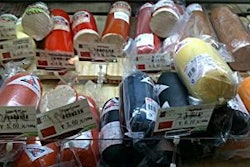If you think education is expensive, try ignorance. Although doubt surrounds who coined this phrase, there can be no doubt about its message, and for any animal production industry, a proper consumer understanding of how meat, milk and eggs are produced would be no bad thing.
Scare stories on poultry production are sometimes justified, but often the public is alarmed through a failure to understand actually how the food we eat is produced. With that understanding, such stories would have far less impact and be more quickly rejected when they do emerge.
And I don’t mean propaganda. It is easy to attack animal welfare groups as wanting to turn whole world vegan and of exaggerating what “undercover” reports have found. But if any producer seeks to indoctrinate consumers into the benefits of their products or the high standards of their methods, they are guilty of a similar crime. A good education should not be telling consumers what to think, rather it should be provide the facts, good and bad, and the tools, to allow them to make up their own minds.
There are, fortunately, many good initiatives out there.
Take, for example, an initiative by Australia’s Poultry Cooperative Research Centre (CRC).
Some 80 copies of a Teacher Resource Kit have been delivered to schools this year. The kits feature poultry-related educational resources developed by the Poultry CRC, the Australian Chicken Meat Federation, the Australian Egg Corporation and the Rural Industries Research and Development Corporation (RIRDC Chicken Meat Program, including books, DVDs, posters and classroom activities.
In the northern hemisphere a survey of food awareness in primary schools in the South West of England, designed to determine awareness and knowledge of vegetables, dairy and meat produce readily available in supermarkets, though up some good, but also some surprising results.
Levels of recognition among the children were higher for animals than for vegetables. 98% were able to correctly identifying chickens. Turkeys were less easily recognized, with only 50% of children able to correctly identify the bird, but 95% of respondents identified that chickens produce eggs. The survey was carried out in a largely rural part of the country, and 77% of the children had visited a farm.
But there were also a few strange answers to the survey and these, of course, were the ones that grabbed headlines. Some children answered that eggs came from sheep or yoghurt, and that yoghurt came from turkeys, ducks or the cat! Cheese was said by some children to come from butterflies, ham from eagles or, alternatively, from a girl called Helen!
While these alternative food sources have caused much amusement in the press they, nevertheless make an important point. If you ask the average consumer about how they use medicines, very few fully comply with manufacturers’ or prescribers’ instructions, despite the risk of treatment failure and clear messaging on-pack or in leaflets.
We all like to think we know best, but when technologies or methods are new or unfamiliar it is unlikely that we actually do. Properly educated consumers can help move production forward, but without it, there will still be those who think that butter comes from a mouse and that peacocks produce bacon.




.jpg?auto=format%2Ccompress&fit=crop&h=167&q=70&w=250)













